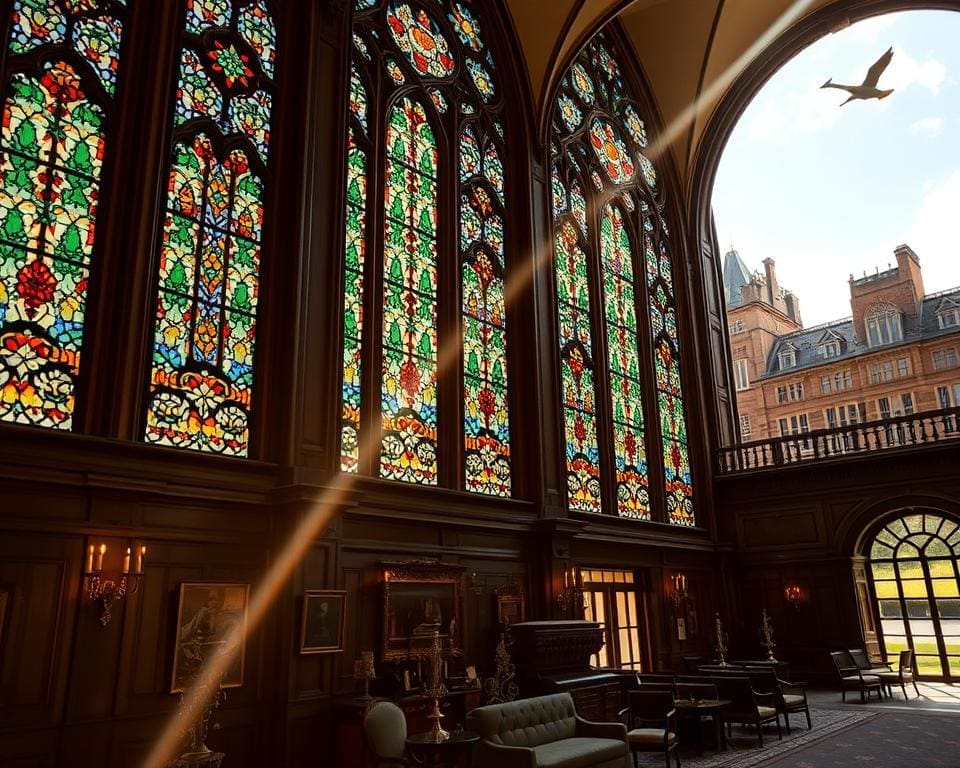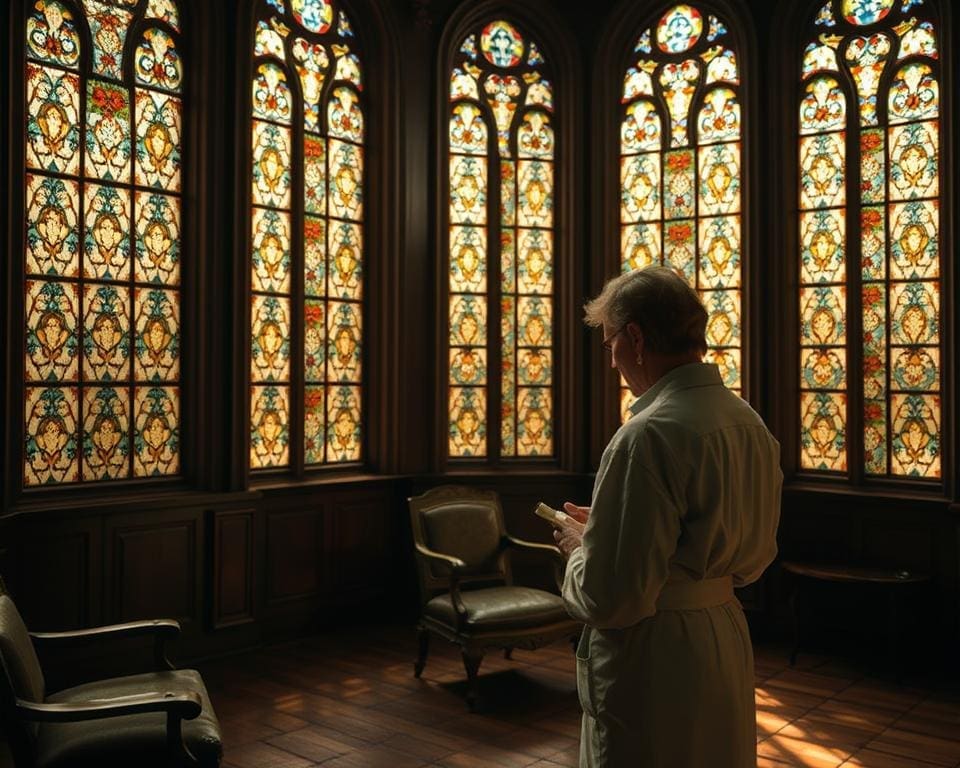Preserving stained glass in Georgian homes is crucial for maintaining both the aesthetic beauty and cultural heritage these properties embody. The intricate designs and vibrant colours of stained glass enhance natural light, creating an enchanting atmosphere that reflects the craftsmanship of a bygone era. With Georgian architecture being characterised by its distinctive features, effective stained glass preservation techniques become essential to protect these remarkable art pieces from environmental wear. Notably, organisations like Historic England emphasise the importance of safeguarding such cultural assets for future generations. Understanding how to preserve stained glass in Georgian homes not only protects these historical treasures but also enriches the experience of living within these architecturally significant buildings.
Understanding Stained Glass in Georgian Architecture
Stained glass plays a remarkable role in the narrative of Georgian architecture, providing insights into the artistic expressions of the time. It reflects a unique blend of craftsmanship and storytelling that marks the period’s cultural significance. Through the intricate designs and vivid colours, stained glass does not merely embellish buildings but imbues them with a sense of history that continues to captivate audiences today.
The Historical Significance of Stained Glass
The historical significance of stained glass is indisputable within the context of Georgian architecture. This medium was frequently employed to illustrate not only religious themes but also to depict scenes from mythology and history. In the 18th century, stained glass was instrumental in conveying complex narratives to the public, as literacy rates varied widely. Its visual appeal transformed architectural spaces, enhancing the interiors of both public buildings and private homes.
Features of Stained Glass in Georgian Homes
The features of stained glass in Georgian homes reveal much about the aesthetic preferences of the era. Common characteristics include:
- Vibrant colours that reflect the natural light beautifully, creating a kaleidoscope effect within rooms.
- Intricate patterns that often carry symbolic meanings, adding layers of significance to the artwork.
- Biblical and mythological themes that served to educate and inspire viewers through visually rich storytelling.

Notable architects, such as Robert Adam, contributed remarkably to the evolution of stained glass, seamlessly integrating it into their designs to elevate the beauty of Georgian architecture. The legacy of stained glass continues to inform contemporary design while preserving a vital connection to the past.
How do you preserve stained glass in Georgian homes?
Preserving stained glass in Georgian homes requires meticulous attention to detail and knowledge of the techniques that best protect these historical treasures. The significance of proper preservation techniques extends beyond aesthetics; they ensure the longevity and integrity of the glass, safeguarding its vivid colours and intricate designs. Environmental factors such as temperature fluctuations and humidity pose challenges to stained glass preservation in Georgian homes, making it essential to adopt effective strategies for maintenance and care.
Importance of Preservation Techniques
The importance of preservation cannot be overstated, as it directly influences the durability of stained glass installations. Precise methods play a role in mitigating damage caused by natural elements. Effective preservation techniques help in the following ways:
- Protecting against UV light: Exposure to sunlight can cause colours to fade and materials to deteriorate.
- Stabilising humidity levels: Maintaining appropriate moisture content reduces the risk of glass cracking or warping.
- Preventing physical damage: Ensuring that the glass is securely mounted protects it from accidental impacts.
Taking these preservation techniques seriously contributes to the overall health of stained glass in historical settings. Community initiatives often play an essential role in advocating for the importance of preservation, creating awareness of the need for specialised care. Engaging local craftsmen and restorers who are trained in traditional methods fosters a deeper appreciation for these artistic pieces, ensuring their stories continue for generations.
Common Preservation Techniques for Stained Glass
Maintaining the beauty and integrity of stained glass is essential in preserving the distinctive character of Georgian homes. Implementing effective cleaning and maintenance practices, as well as proper reinforcement methods for stained glass, ensures these exquisite artworks withstand the test of time. Emphasis on common preservation techniques can make a significant difference in the longevity of stained glass installations.
Cleaning and Maintenance
Regular attention to cleaning and maintenance is crucial. Non-abrasive methods are recommended for cleaning stained glass to avoid scratches or surface damage. Solutions such as mild soapy water applied with a soft cloth can effectively remove dirt and grime without harming the glass. It is wise to consult resources from experts, like English Heritage, which outline important dos and don’ts of cleaning stained glass.
Reinforcement Methods
To ensure the stability and durability of stained glass panels, various reinforcement methods for stained glass come into play. One effective technique includes the application of protective glazing, which can shield the stained glass from harsh weather conditions and accidental impacts. The British Society of Master Glass Painters discusses several reinforcement strategies that can contribute to long-term preservation results, further enhancing the resilience of historical glass art.
Stained Glass Restoration for Historical Homes
Preserving the beauty of stained glass is essential for maintaining the character of historical homes. Noticing when stained glass requires professional restoration is key to ensuring its longevity. Homeowners should be vigilant regarding the condition of their stained glass. Signs of deterioration, such as cracks, loss of adhesion, or discolouration, are indicators that it may be time to seek expert assistance. Regular evaluations can make a significant difference in the overall health of these magnificent installations.
When to Consider Professional Restoration
Identifying when to pursue stained glass restoration can extend the lifespan of these artistic elements. Homeowners should consider professional restoration if they observe:
- Visible cracks disrupting the artwork.
- Separation of glass pieces from the frame.
- Significant discolouration affecting the vibrancy.
- Water damage causing additional deterioration.
Addressing any of these conditions quickly can prevent more extensive damage. Seeking professional restoration at the right moment is crucial for authentic preservation.
Choosing Qualified Restorers
Finding the right expert is a vital step in stained glass restoration. Homeowners should focus on essential criteria when choosing qualified restorers:
- Verify credentials and certifications in stained glass work.
- Review previous portfolio showcasing successful restorations.
- Seek recommendations from reputable heritage organisations.
- Consider experience in working with similar historical properties.
Engaging with qualified restorers enhances the chances of achieving exceptional results. Expert craftsmanship ensures the stained glass retains its historical integrity while rejuvenating its beauty.
Maintaining Stained Glass in Period Properties
Maintaining stained glass in period properties involves careful consideration of the environment and regular upkeep. Creating the right environment is essential to ensure that these exquisite windows are preserved for future generations. Both humidity and temperature play vital roles in the longevity of stained glass. Implementing solutions such as dehumidifiers or climate control systems can significantly enhance the preservation environment.
Creating the Right Environment
Stained glass thrives when kept in optimal conditions. To achieve this, homeowners should consider the following:
- Monitor humidity levels to prevent the deterioration of lead and glass.
- Use dehumidifiers or air conditioning systems to maintain a stable climate.
- Ensure proper ventilation to avoid condensation build-up.
Implementing these strategies contributes tremendously to maintaining stained glass integrity within period properties.
Regular Inspections and Care
Regular inspections are crucial for identifying and addressing potential issues before they escalate. Homeowners should carry out periodic check-ups to:
- Examine the condition of the lead cames and glass.
- Look for signs of water damage or leaks.
- Ensure the fittings and supports remain secure and undamaged.
Taking these proactive steps sets the foundation for effective maintaining stained glass. Experiences from property owners highlight the significance of such practices to preserve the charm and beauty intrinsic to period properties.
Conservation Methods for Long-term Protection
Preserving stained glass in Georgian homes requires an understanding of effective conservation methods for stained glass that provide long-term protection while maintaining the artwork’s integrity. Contemporary advancements, such as UV filtering films and specialised protective coatings, have revolutionised how we safeguard these magnificent installations. These innovations enhance durability against environmental factors without compromising the vibrant aesthetics that define stained glass artistry.
Moreover, local councils often offer conservation grants to assist homeowners in implementing these valuable protection measures. This financial support not only aids in preserving stained glass but also encourages the upkeep of historical homes, ensuring that the architectural beauty of landmarks is protected for future generations. It is vital for homeowners to explore these opportunities and invest in the conservation of their properties.
Community involvement also plays a crucial role in fostering local heritage activism. By collaborating with local organisations and participating in conservation efforts, homeowners can inspire collective action towards the preservation of stained glass. This grassroots approach not only strengthens community ties but also elevates awareness regarding the importance of safeguarding such irreplaceable treasures within our historical homes.









